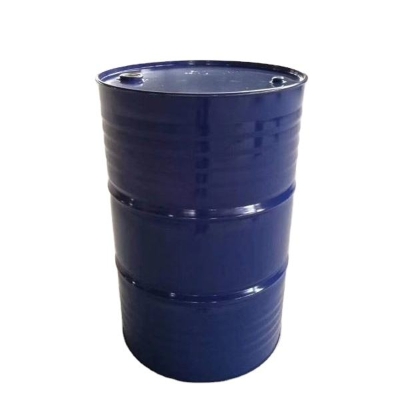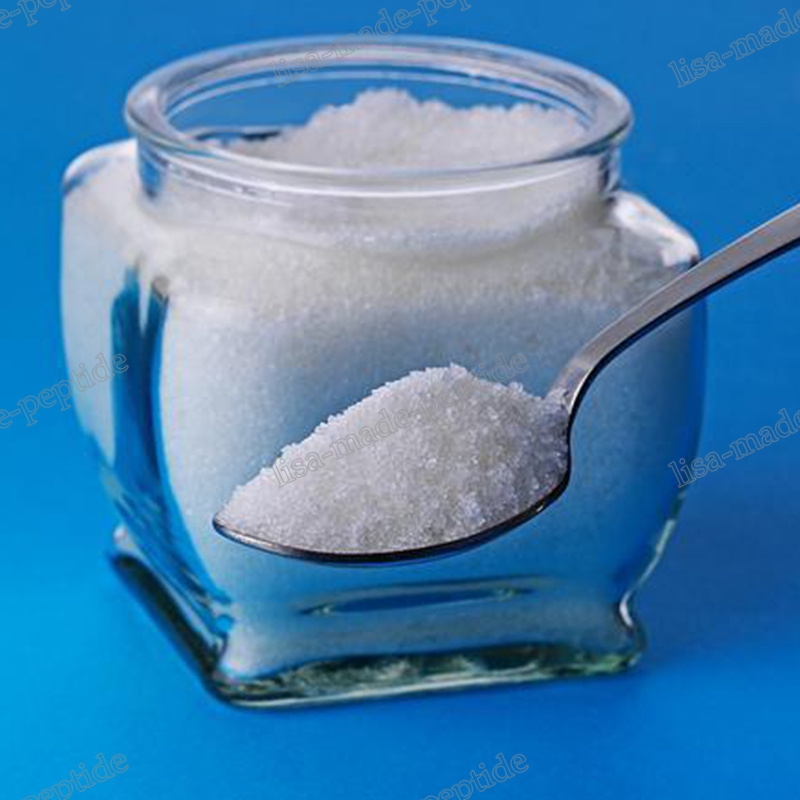-
Categories
-
Pharmaceutical Intermediates
-
Active Pharmaceutical Ingredients
-
Food Additives
- Industrial Coatings
- Agrochemicals
- Dyes and Pigments
- Surfactant
- Flavors and Fragrances
- Chemical Reagents
- Catalyst and Auxiliary
- Natural Products
- Inorganic Chemistry
-
Organic Chemistry
-
Biochemical Engineering
- Analytical Chemistry
-
Cosmetic Ingredient
- Water Treatment Chemical
-
Pharmaceutical Intermediates
Promotion
ECHEMI Mall
Wholesale
Weekly Price
Exhibition
News
-
Trade Service
【Chemical Machinery and Equipment Network Industry News】Food safety is related to the health and life safety of the people, and is the focus of social attention
.
The national standard for food testing provides technical support and standardization for food production and market supervision, and is an important guarantee for
food quality and safety.
In October, three more national standards for food testing were officially implemented, improving the food quality standard system and providing new strength
for food supervision.
The three standards are GB/T 41133-2022 "Determination of lycopene, lutein and carotene content in tomato products Ultra-high performance liquid chromatography", GB/T 41366-2022 "Quality testing of livestock and poultry meat-Determination of moisture, protein and fat content by near-infrared method" and GB/T 19427-2022 "Determination of the content of 12 phenolic compounds in propolis - liquid chromatography-tandem mass spectrometry and liquid chromatography"
.
.
The national standard for food testing provides technical support and standardization for food production and market supervision, and is an important guarantee for
food quality and safety.
In October, three more national standards for food testing were officially implemented, improving the food quality standard system and providing new strength
for food supervision.
The three standards are GB/T 41133-2022 "Determination of lycopene, lutein and carotene content in tomato products Ultra-high performance liquid chromatography", GB/T 41366-2022 "Quality testing of livestock and poultry meat-Determination of moisture, protein and fat content by near-infrared method" and GB/T 19427-2022 "Determination of the content of 12 phenolic compounds in propolis - liquid chromatography-tandem mass spectrometry and liquid chromatography"
.
Determination of lycopene, lutein and carotene content in tomato products Ultra-high performance liquid chromatography
Lycopene, lutein and carotene are the main carotenoids in tomato products, and their content is closely related
to the nutritional quality and color of tomato products.
In the processing process of tomato products, carotenoids will be degraded due to sunlight, heating and other factors, and lycopene will also be isomerized, thus affecting the nutritional quality and color of tomato products
.
Therefore, the determination of lycopene (containing isomers), lutein and carotene in tomato products is conducive to controlling product quality and improving the processing technology
of tomato products.
to the nutritional quality and color of tomato products.
In the processing process of tomato products, carotenoids will be degraded due to sunlight, heating and other factors, and lycopene will also be isomerized, thus affecting the nutritional quality and color of tomato products
.
Therefore, the determination of lycopene (containing isomers), lutein and carotene in tomato products is conducive to controlling product quality and improving the processing technology
of tomato products.
The standard specifies the principles, reagents and materials, instruments and equipment, analysis steps, result calculation, precision, detection limit and quantitative limit of tomato powder, tomato paste, tomato drink, tomato dry products in the determination of lycopene, lutein, a-carotene and β-carotene in tomato powder, tomato paste, tomato beverage, tomato dried products
.
.
The method is: after the sample is added with water and ethanol, lycopene, lutein, carotene is extracted with ether-n-hexane-cyclohexane mixed solution, ultra-performance liquid chromatography separation, ultraviolet detector or diode array detector detection, external standard quantification
.
.
Livestock and poultry meat quality testing Determination of moisture, protein and fat content Near-infrared method
Moisture, protein, fat content and other indicators can reflect the quality and safety of
livestock and poultry meat.
At present, the standard detection methods of these indicators are mostly destructive testing, and the detection time is more than 24 hours, which cannot meet the needs of large-scale and large-scale sampling inspection, and affect the quality and safety supervision efficiency
of raw meat in China.
The near-infrared technology can realize non-destructive testing and has the advantages of objectivity, rapidity, accuracy, multi-index, reproducibility, easy operation and economy, and has been widely studied
in the rapid detection of livestock and poultry meat.
livestock and poultry meat.
At present, the standard detection methods of these indicators are mostly destructive testing, and the detection time is more than 24 hours, which cannot meet the needs of large-scale and large-scale sampling inspection, and affect the quality and safety supervision efficiency
of raw meat in China.
The near-infrared technology can realize non-destructive testing and has the advantages of objectivity, rapidity, accuracy, multi-index, reproducibility, easy operation and economy, and has been widely studied
in the rapid detection of livestock and poultry meat.
This standard describes the principle of near-infrared spectroscopy detection methods for moisture, protein and fat content in livestock and poultry meat, instruments and equipment, sample preparation, model establishment and verification, sample detection and results, confirmation and processing of abnormal measurement results and accuracy, and is suitable for the simultaneous detection
of moisture, protein and fat content in livestock and poultry meat.
of moisture, protein and fat content in livestock and poultry meat.
The principle of the method is: using the absorption spectrum generated by the combined frequency or frequency doubling of the chemical bonds such as hydrogen-containing group XH (X=C, N, O) and other chemical bonds in livestock and poultry meat at a wavelength of 780 nm~2526 nm, the quantitative analysis and correction model of moisture, protein and fat content is established by multiple correction methods, and then the near-infrared spectrum of the detection sample is introduced into the calibration model to realize the simultaneous rapid detection
of moisture, protein and fat content in livestock and poultry meat.
of moisture, protein and fat content in livestock and poultry meat.
Determination of the content of 12 phenolic compounds in propolis by liquid chromatography-tandem mass spectrometry and liquid chromatography
Propolis is a viscous substance formed by worker bees collecting secretions such as plant resin and mixing with beeswax and pollen, which has the functions
of antioxidant, antibacterial, antiviral, immunomodulatory and tumor inhibition.
The functional activity of propolis is closely related to the active ingredients it contains, and its chemical composition is mainly affected
by its colloidal plants.
In recent years, poplar gum has appeared on the market to deceive consumers by passing off propolis, and in recent years, there have been a large number of propolis
in Brazil and other countries in the circulation field.
of antioxidant, antibacterial, antiviral, immunomodulatory and tumor inhibition.
The functional activity of propolis is closely related to the active ingredients it contains, and its chemical composition is mainly affected
by its colloidal plants.
In recent years, poplar gum has appeared on the market to deceive consumers by passing off propolis, and in recent years, there have been a large number of propolis
in Brazil and other countries in the circulation field.
GB/T 19427-2003 "Methods for determination of the contents of rutin, myricetin, quercetin, benzethineol, apigenin, pinin, caustic and galangin in propolis - liquid chromatography-tandem mass spectrometry detection and liquid chromatography-ultraviolet detection" lacks specificity for the identification of poplar gum and imported Brazilian propolis, so it needs to be revised
.
.
This standard replaces GB/T19427-2003 and describes liquid chromatography-tandem mass spectrometry and liquid chromatography for the determination of caffeic acid, p-coumaric acid, ferulic acid, corcumin, diphenol, apigenin, pinein, coyne, galange, basoquelin 3-acetate, chlorogenic acid, and atepyrine C content determination in propolis
.
The principle of the method is: propolis samples are extracted with 85% ethanol aqueous solution, ultrasonic, centrifuged, filtered and volumetric, and determined by liquid chromatography-tandem mass spectrometry or liquid chromatography equipped with ultraviolet detector, and quantified by external standards
.
.
The principle of the method is: propolis samples are extracted with 85% ethanol aqueous solution, ultrasonic, centrifuged, filtered and volumetric, and determined by liquid chromatography-tandem mass spectrometry or liquid chromatography equipped with ultraviolet detector, and quantified by external standards
.
Original: Improve food quality supervision Three national food testing standards have been implemented since October







